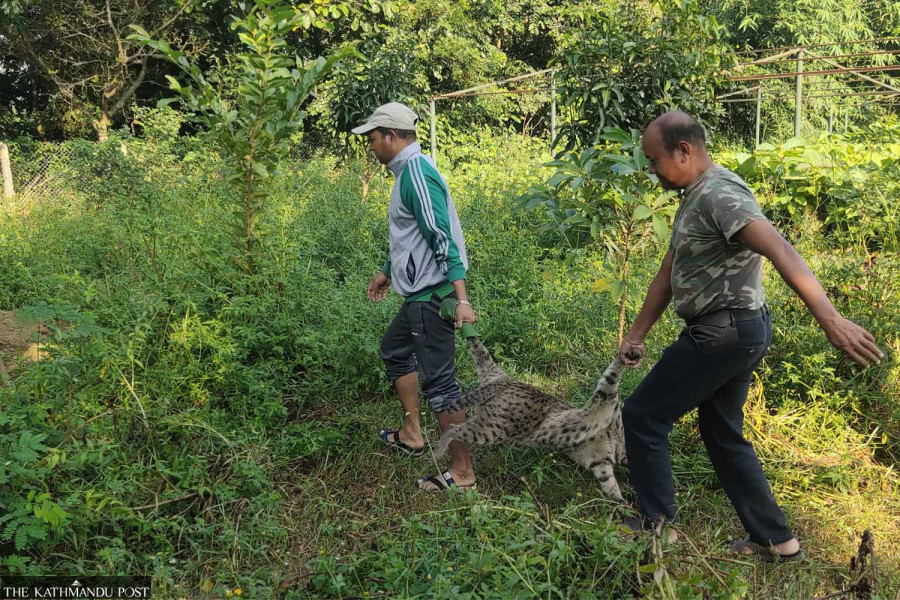Lumbini Province
Authorities’ apathy affects conservation of fishing cats
Calls growing for efforts to save the endangered mammal.
Manoj Poudel
A fishing cat, locally known as Pani Biralo, was found critically injured on a road in Dayanagar village in Krishnanagar Municipality-8, Kapilvastu on October 28. The locals who had found the injured cat informed the division forest office in Chandrauta but the cat succumbed to its injuries before a rescue team could reach the site.
Fishing cats have been enlisted as endangered mammal species by the International Union for Conservation of Nature. It is estimated that there are around 150 to 200 fishing cats in Nepal. The medium-sized cat species are found in South and Southeast Asia. Conservationists have raised concerns about the increasing deaths of fishing cats in road accidents in Nepal.
The adult fishing cat found in Dayanagar village last week had sustained injuries in its mouth, according to Rajat Pratap Sah, the mayor of Krishnanagar. “The injuries did not seem life-threatening and the cat could have been saved if it was discovered sooner,” he said.
According to the forest officials, search is on for the hit-and-run culprit.
Rama Mishra, a conservationist who is pursuing a doctoral degree in fishing cats, says another fishing cat had died in a similar road accident in Tribeni of Nawalparasi (West) last year. “The number of fishing cats is very low in Nepal and the world. Losing these cats to road accidents harms conservation efforts,” said Mishra who has been working towards the conservation of fishing cats for the past 10 years.
Conservationists say indifference on the part of government authorities and their limited understanding of the need for the conservation of this endangered species is one of the reasons behind the failure to increase the population of these cats with road accidents, shrinking wetland areas and poaching being the other reasons.
“These cats are elusive so when we spot one on camera traps set up in forests for monitoring, we feel exuberant. Although the government and several other organisations have been working for the conservation of wildlife, fishing cats are yet to make it to their priority list,” said Swechchha Shrestha, another conservationist studying the fishing cats. “There is a shortage of means and resources in its conservation.”
Conservationists underscore the need for an immediate and effective rescue of the injured animals and stringent legal action against the guilty involved in injuring and killing the endangered and protected animals in the country.
Hem Sagar Baral, a senior ornithologist, says that the incidents of injuries and death of these rare animals will continue to go unchecked unless effective implementation of conservation laws is ensured.
According to the prevailing legal provisions, one will be fined Rs100,000 to Rs500,000 or jailed for one year to five years or both if one is found guilty of killing fishing cats.
The fishing cat (Prionailurus viverrinus) is a feline with a powerful build and about twice the size of a house cat. The size of an adult ranges from 57-78 cm and weighs between 15-16 kg. The fishing cat is an adept swimmer and preys on fish frequently.
Wetlands are the major habitats of fishing cats. In Nepal, these cats are mainly found in Chitwan, Bardiya, Nawalparasi, Kapilvastu, Bara, Parsa and near the river banks of the Karnali, Babai, Rapti, Narayani, and Koshi rivers.




 16.16°C Kathmandu
16.16°C Kathmandu













